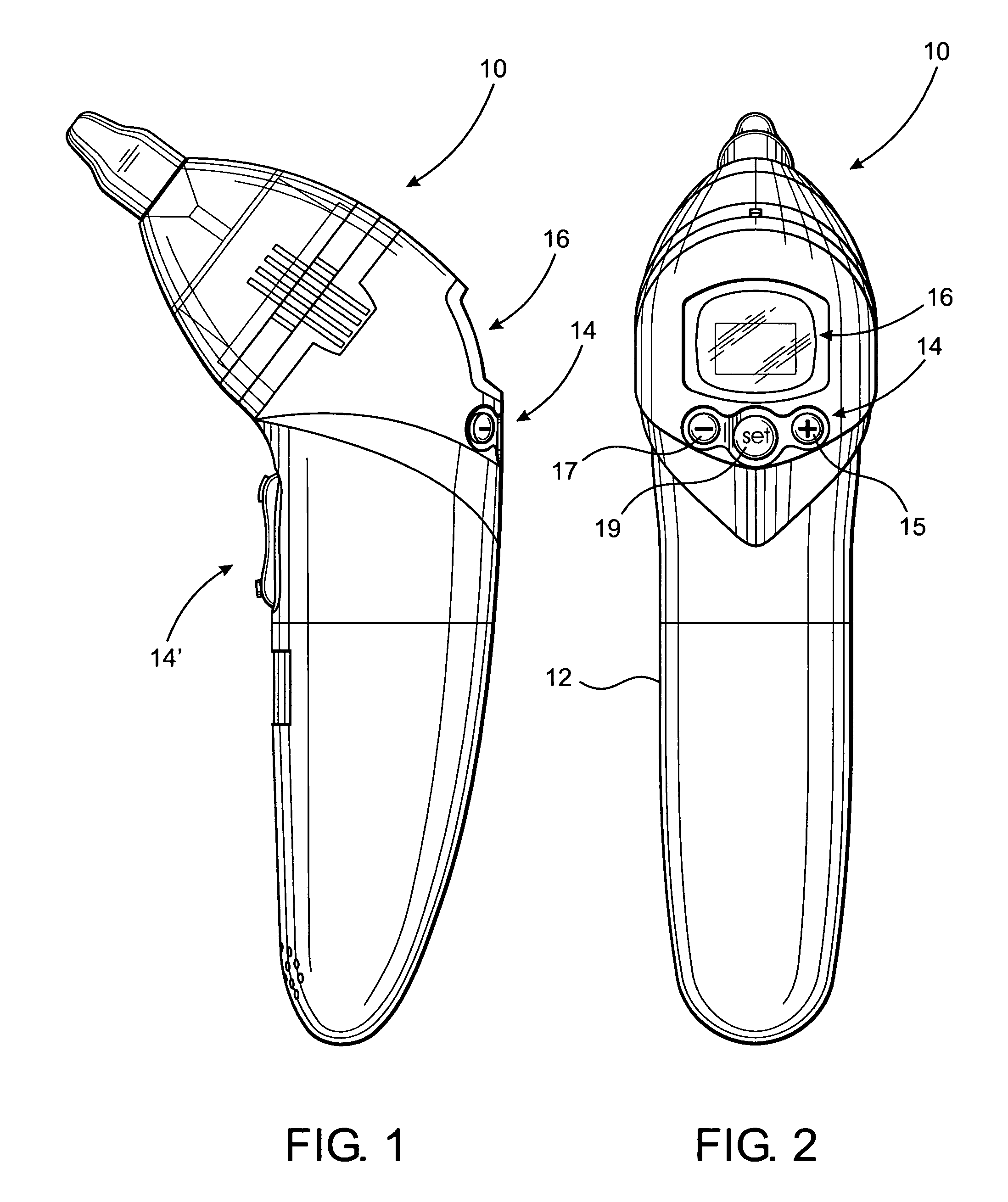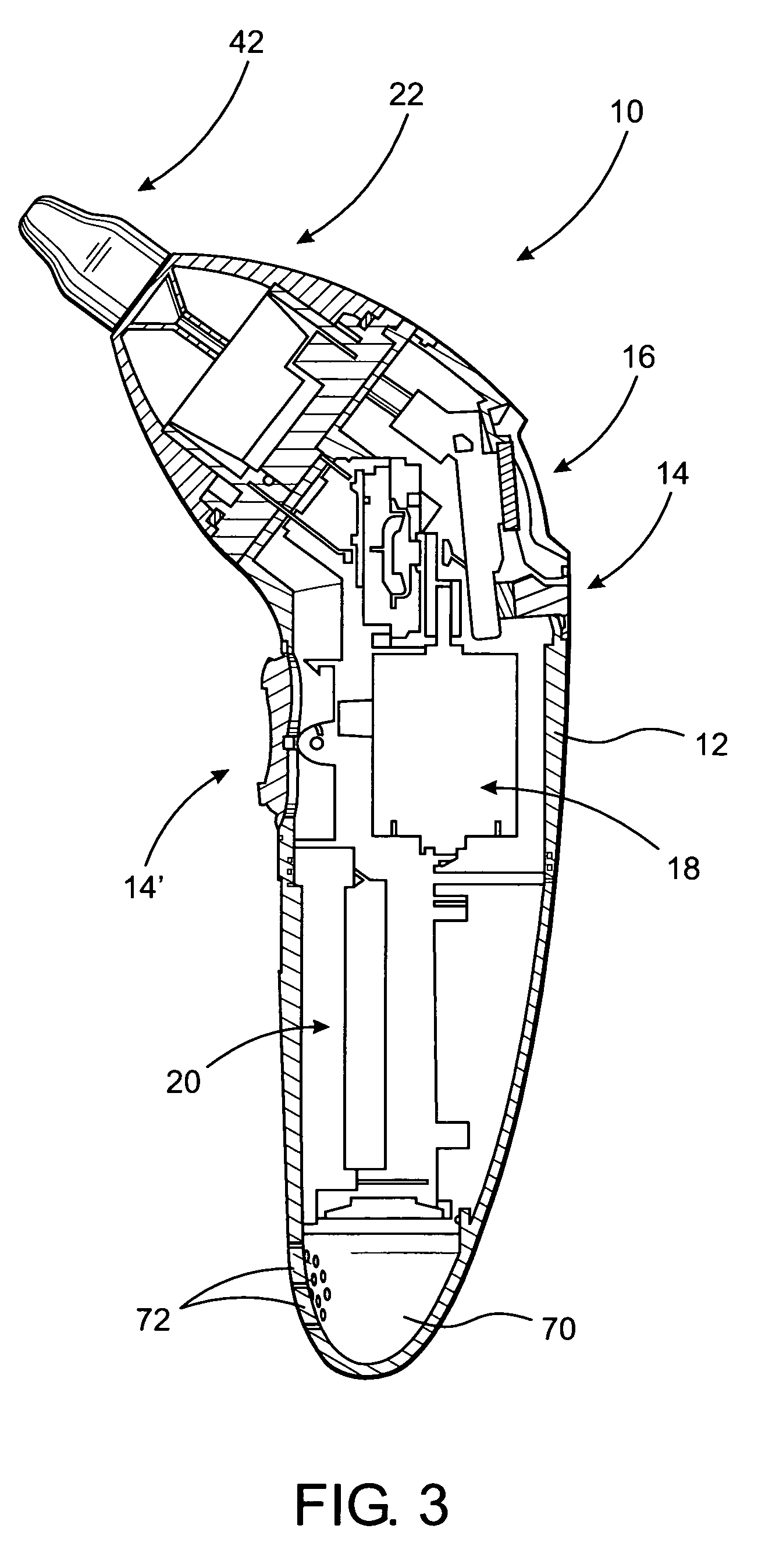Aspirator assembly
a technology of aspirator and assembly, which is applied in the direction of suction devices, suction drainage containers, medical devices, etc., can solve the problems of increasing the possibility of infection, affecting the flow direction of air, and preventing the self-induction expulsion of mucus by blowing one's nose, etc., to facilitate the collection of mucus heavier, facilitate the casing, and facilitate the effect of flow direction
- Summary
- Abstract
- Description
- Claims
- Application Information
AI Technical Summary
Benefits of technology
Problems solved by technology
Method used
Image
Examples
Embodiment Construction
[0025]As shown in the accompanying Figures, the present invention is directed to an aspirator assembly generally indicated as 10 including an at least partially hollow interior casing 12, as represented in FIG. 3. The casing 12 is dimensioned and configured to be hand held and includes a plurality of operator buttons or like control members generally indicated as 14. The controls 14 facilitate activation and operation of the aspirator assembly 10 by a single hand of an operator. In conjunction therewith, a display assembly generally indicated as 16 is disposed in a readily observable location on the casing 12 and is cooperatively structured with appropriate control and operating circuitry (not shown) to allow visualization of the operational and performance characteristics of the aspirator assembly 10. Additional activation controls 14′ may also be disposed on the casing 12 and generally, but not exclusively, may be operatively connected to appropriate control circuitry to serve as ...
PUM
 Login to View More
Login to View More Abstract
Description
Claims
Application Information
 Login to View More
Login to View More - R&D
- Intellectual Property
- Life Sciences
- Materials
- Tech Scout
- Unparalleled Data Quality
- Higher Quality Content
- 60% Fewer Hallucinations
Browse by: Latest US Patents, China's latest patents, Technical Efficacy Thesaurus, Application Domain, Technology Topic, Popular Technical Reports.
© 2025 PatSnap. All rights reserved.Legal|Privacy policy|Modern Slavery Act Transparency Statement|Sitemap|About US| Contact US: help@patsnap.com



